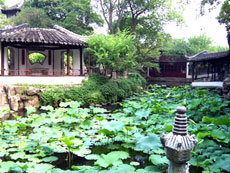The famed nha vuon or garden house of Hue City could flourish and bloom again, nurtured by new policies of the Thua Thien-Hue provincial administration.

The provincial People’s Committee has decided that each
nha vuon owner will receive financial support of VND 100 million (USD 5,597) to restore the house.
Residents who invest in building
nha vuon will receive VND 5 million (USD 263) per house towards buying saplings or seeds for trees. They will also be granted five-year preferential loans.
Local authorities plan to work closer with tourism firms in the province in general and Hue City in particular to support
nha vuon owners, who often open their houses to the public free-of-charge, in developing business activities.
According to a recent survey conducted by the Hue Relic Preservation Centre, there are 690 typical house gardens in the province. In Hue alone, there are 330 such houses, many of which are located in gardens with a width of 400m² each.
A typical
nha vuon in Hue has two main parts:
nha ruong and the surrounding garden, designed according to geomancy (feng shui) stipulations and their owner’s spiritual orientation.
Each
nha ruong is built with many beams (
ruong) and pillars (
cot), and its name is derived from this very characteristic.
Another very distinctive feature is that all beams and pillars are joined by mortise and tenons, not nails.
Roofed with brick tiles, the beams and pilllars of
nha ruong are made of precious and solid wood such as
lim (iron wood),
gu (sindora) or
thong xanh (teranthera pine). The whole house stands on big pillars placed on a round or square stone base. Such houses are mostly located in Hue.
Traditionally, a
nha vuon cannot be sold out of the family in order to maintain ancestral links. However, rocketing land values have encouraged some people to sell their land or disassemble their
nha ruong. Some homeowners who cannot afford to restore their property from the ravages of time have disassembled and sold parts to people from other localities.
It this trend continues, a unique feature of the central province will disappear into history and culture books.
Provincial and authorities are hoping the new policies will prove to be a shot in the arm for preservation and revival efforts.